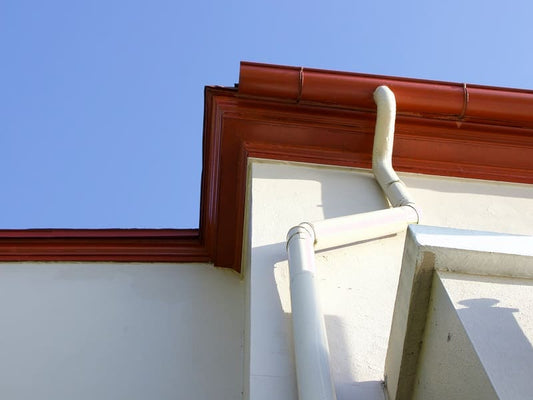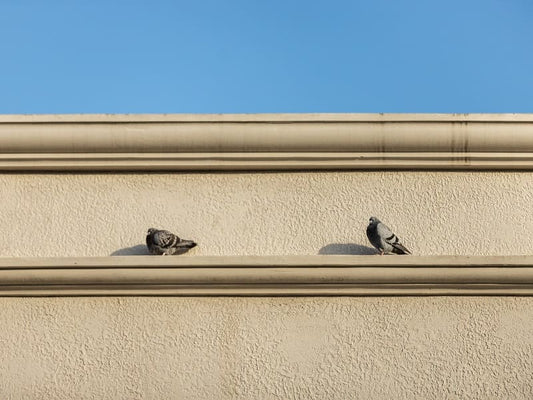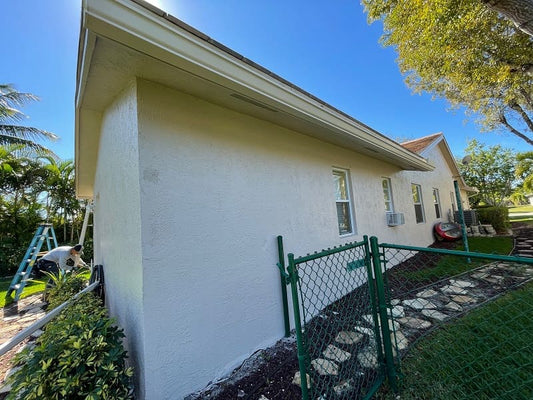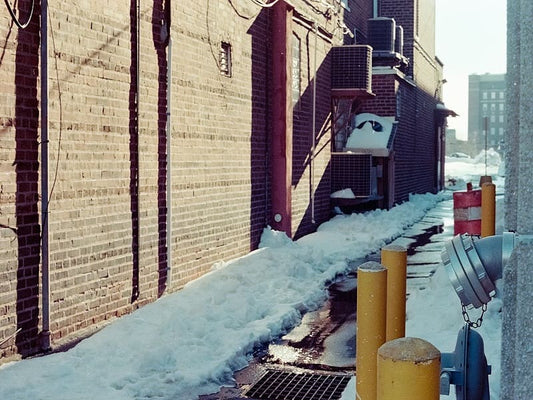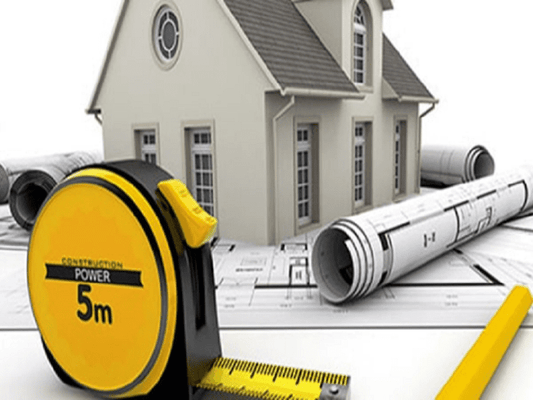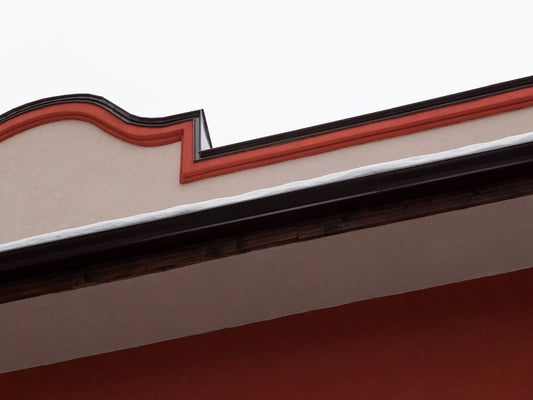
Everything You Need to Know About Reverse Curve Gutter Guards!
Everything You Need to Know About Reverse Curve Gutter Guards!
Picture this: a roofing sentinel standing watch, allowing rain to flow freely into your gutters while diverting debris away. The reverse curve gutter guards' ace in the hole is an ingenious design that channels water through surface tension while sending leaves and debris packing.
Unlike standard gutters, these guards feature a reverse curvature, in which water follows into the gutter channel. It's a beautiful and perfect water ballet. But, like any fighter, they are not without their flaws.
Have you ever wondered the best method for cleaning or removing one of these innovative devices? Relax; we'll reveal everything you need about reverse-curve gutter guards. So, put your mind at ease and keep water flowing freely.
What Are Reverse Curve Gutter Guards?
You can protect your gutters from debris with reverse curve gutter guards without restricting the flow of rainfall. Instead of relying on a mesh or solid surface to trap debris, as most gutter guards do, reverse curve gutters employ water adhesion to do the job.
The guard's curved surface channels water away while blocking debris. Rainwater sticks to the curved surface as it pours down the roof and then follows the curve into the gutter. Meanwhile, it also diverts soil and other debris from the bend to help keep the drain clean.
This clever layout uses water's tendency to flow over curved surfaces to direct precipitation down the gutter while keeping trash out. Keeping your gutters clean and in good working order is a simple yet efficient technique to prevent water damage to your property.
Benefits of Reverse Curve Gutter Guards
There are several advantages to installing gutter guards with a reverse curve.
- First, they do a great job of avoiding water damage to your property by keeping leaves, dirt, and twigs out of your gutters. The rainwater has an unobstructed path thanks to the innovative shape, which encourages water to follow the curve and flow into the channel.
- Second, these guards need nothing in the way of upkeep. Cleaning and unclogging gutters are standard, but reverse curve guards reduce the hassle by keeping material out of the channel.
- Reverse gutter guards are sturdy and can hold up in various climates. They are often made from durable materials that withstand snow, ice, and heavy rain. This longevity guarantees long-term cost-effectiveness.
- Finally, they improve your home's overall visual attractiveness. Gutter guards with a reverse curve are almost invisible against the roof, creating a clean, professional appearance.
Different Types of Reverse Curve Gutter Guards
There are different reverse-curve gutter guards on the market. The snap-on or clip-on reverse-curve guard is a popular option since it is simple to install and stays firmly in place on the gutter.
Another kind is the built-in reverse-curve guard, in which the arc is integral to the channel's production.
With a mesh or screen covering the gutter hole, reverse curve guards enable water to flow through yet keep debris out.
The effectiveness of reverse-curve gutter guards in preventing debris and reducing the frequency of gutter cleaning makes them a popular option. Homeowners can choose the reverse curve gutter guard that best suits their needs and aesthetic choices.
How to DIY Install Reverse Gutter Guards?
Are you confident enough to handle the job of installing reverse curve gutter guards by yourself? Let's make this do-it-yourself project easy!
- As a first step, gather the equipment you'll need, such as a ladder, a measuring tape, and a trusted drill.
- Start by taking precise measurements of your gutters, then have the gutter guards cut to size. Accuracy is essential if you want a good fit.
- Place the guard over the drain so that the curved edge points upward and the flat side rests on the outside lip of the gutter.
- Next, use clips or screws to keep the shields in place.
- Ensure they're securely attached so they don't fly off in the wind or rain.
- Carefully fasten each part of the gutter as you work your way along.
- At last, take a break and take stock of your accomplishments!
The guards should fit together smoothly, making a shield against trash that doesn't get in the way. Leave the guards to work, clearing your gutters so water can flow freely.
How to Remove Reverse Curve Gutter Guards?
- Wear protective gear and ensure the ladder you want to use to reach the gutters is secure.
- Start with one end of the guard. Remove the guard's clips or snaps carefully, then fasten it with a tool or your hands.
- Carefully work your way down the length of the gutter, removing the guard as you go.
- Check the guards for damage or wear that might need repairs or replacements as you remove them.
- It's essential to clean and keep the guards properly if you want to use them again.
- Remove the guards and clean the gutters to ensure they are clear.
How to Clean Reverse Gutter Guards?
Here's a quick and easy way to maintain your reverse-curve gutter guards:
- You'll need a brush or soft cloth, a garden hose, protective gloves, and a strong ladder.
- Place the ladder firmly on the ground next to the gutter. Make sure it won't fall over and is at a comfortable working height.
- Loosen and remove any leaves, twigs, or branches lodged in the gutter guard using your hands or a brush. Put the rubbish in a trash can or a compost bin.
- If any finer debris or dirt is stuck on the gutter guard, you may wash it off with a garden hose. Begin at the end furthest from the downspout to achieve a complete flush.
- Inspect the gutter and downspout for any signs of obstruction. If there is any lingering material, you may use the garden hose to clean it away and restore proper water flow.
- While you're at it, check for damage or wear on the gutter guards. Maintain the guard's efficiency by replacing or repairing worn or broken parts.
- Maintain the integrity of your reverse curve gutters by cleaning them at least twice a year, especially in the spring and autumn.
Eco-Friendly Practices with Reverse Curve Gutter Guards:
Using reverse gutter guards can offer significant environmental benefits. By preventing debris like leaves, twigs, and other materials from clogging gutters, these guards ensure that rainwater can flow freely and efficiently through the gutters and downspouts.
It helps adequately collect and channel rainwater, which can be crucial in water scarcity or drought areas.
By maintaining the functionality of gutters and downspouts, these guards reduce the need for frequent maintenance and cleaning. It leads to water conservation and resource preservation for channels.
How Much Do Reverse Curve Gutter Guards Cost?
The initial outlay for a set of reverse curve gutters may be more than you'd want to spend on gutter protection. The costs may seem high at first, but the payoff in the long run is usually worth it.
By reducing the need to clean the gutters as often, reverse curve gutter guards save you time and money. The likelihood of costly gutter damage from water overflow is significantly reduced.
These guards lengthen the life of your gutters by preventing damage from debris weight and accumulation. Less maintenance and repairs over time equals more money saved on materials and labor.
How Can Reverse Curve Gutter Guards Last Longer?
Regular cleaning is essential for the health and lifespan of your reverse curve gutter guards.
The durability of the guards is directly proportional to the quality of installation. Make sure they're adequately attached to the gutters and that they're not going anywhere. Poor installation may compromise the effectiveness and durability of guards.
Investing in gutter guards made from high-quality materials is a good idea. Choose sturdy aluminum or stainless steel for your protection barriers.
Conclusion:
In conclusion, the reverse curve gutter guards are the undisputed kings of gutter guards. They are the guards that every home needs. They keep your world safe from garbage trolls while doing nothing.
What's even better? These low-maintenance security guards need nothing more than a pat on the back for a job well done. They maintain water flow, clean gutters, and a happy, dry household.

